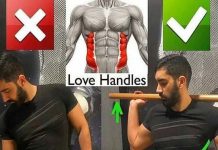The Best 3 Variation Pushup
There are various variations pushup from the floor are an effective and inexpensive way to develop endurance, gain muscle mass, or train your own strength. They do not require special simulators, they can be performed at home at any convenient time. Let’s talk about how useful it is to do pushups every day.

[wp_ad_camp_1]
Different Variation pushup options: Health benefits
Professional athletes say pushup help achieve three goals:
- Make your body more resilient.
- Develop strength.
- Gain muscle mass.
The program of pushup that the athlete adheres to depends on yours goals.
The Benefits of Pushup Exercises
- Good workout the abdominal muscles.
- When performed regularly after a short time, the athlete boasts good abs.
The load when doing pushup is distributed almost throughout the body. It improves blood circulation. As a result, more blood enters the brain, and it begins to work more efficiently, and the metabolic rate increases.
- Strengthen the pectoral muscles and shoulder girdle. Increase muscle mass;
- Maintain muscle tone and normal joint function;
- Pump arms and pectoral muscles.
Pushup: Types and Variation of Training
There are various types of pushups. They differ in the position of the arms and legs during the exercise and are aimed at the development of different muscles. The most common ones are:

[wp_ad_camp_2]
- Classic pushup – developing chest muscles. They are performed with arms extended wider than the shoulder.
- Exercises aimed at strengthening the muscles of the triceps and chest. Made with arms spaced shoulder-width apart.
- Triceps exercises – with arms which are narrow than the shoulders and feet a shoulder-width apart.
You can also see how to pump chest: 3 Chest Exercises
Performing any type of pushup, it is important to remember about proper breathing, which will allow you to fully carry out your program and not to exhaust the body. The basic principle is that you need to breathe smoothly, taking a breath when the body goes down, and exhale when lifting.
Pushup the program of which is not too complicated, athletes recommend starting from 10–20 times every morning and increasing as the training experience increases to 15–30 times.
Type and Variation Pushup
Diamond pushup
Muscles work: Triceps work, chest, and deltas a secondary.

[wp_ad_camp_3]
How to Do Technique of execution
The starting position is the emphasis for push-ups on straight arms, but the hands are so close to each other that the thumb and forefinger touch each other and, as it were, form a figure similar to a diamond.
On inspiration, the body drops until the chest is as close to the hands as possible. Keep your elbows closer to the body. as you exhale, rise, straightening your arms.
Narrow arms pushup
Muscles work: Mostly triceps work, and chest and deltas a secondary.

[wp_ad_camp_4]
How to Do Technique of execution
The accent on the arms, but the hands are located directly under the chest, at a distance of several centimeters from each other. The feet are slightly apart to keep the balance. On a breath – we lower, bending our arms. The endpoint is 3-5 cm from the floor. Keep your elbows closer to the body. On the exhale – raise, unbending arms. As in the previous exercise, we are trying to push up the floor away from us using the strength of the triceps.
Wide arm pushup
Muscles work: Mostly the pectoral muscles work. Triceps and deltas are secondary.

How to Do Technique of execution
[wp_ad_camp_5]
The initial position is the emphasis on the hands, the hands are 20-30 cm wider than the shoulders, the elbows should not protrude beyond the line of the hands. The abs is tense in order to keep the whole body in one line (the pelvis does not rise up and the back does not sag down).
On a breath – we go down, bending our arms, while exhaling – we go up, unbending our arms. It is necessary to lower so that the angle of the bend of the arms at the elbows is about 90 degrees, and from chest to floor, it is 3-5 cm.
When we rise, straightening our arms – as if trying to push up the floor.


















































